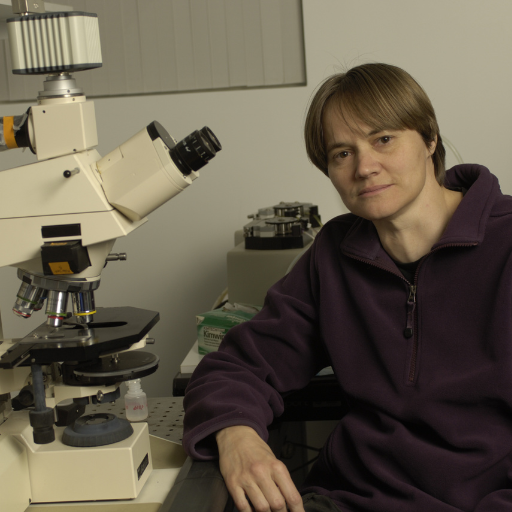The Role of Galactosylceramidase in Glaucoma

About the Research Project
Program
Award Type
Standard
Award Amount
$100,000
Active Dates
April 01, 2010 - March 31, 2013
Grant ID
G2010002
Acknowledgement
Goals
This represents the first report of genomic copy number variants that confer a substantially increased risk of POAG. Considering how common CNVs are in the human genome this may be the first of many such associations. Further characterization of the GALC CNVs will improve our understanding of the etiology of primary open angle glaucoma, and could lead to the development of new tests or treatments for this debilitating disease.
Summary
Our study will be the first to incorporate DNA copy number variants into the genetic association of POAG. The proposed investigation on identified GALC DNA loss will enable us to design CNV-specific PCRs in order to easily screen other POAG samples or the general population in a high-throughput way. Being the first research to link GALC with POAG, our study will open a new research topic and promote more genetic, molecular, and animal studies related with GALC. Our proposed research will provide important and critical information to develop strategies for future genetic test, diagnosis, prevention, and potential therapy in POAG by targeting the loss of function of GALC.
Progress Updates
This study represents the first report of a specific gene expression loss that confers a substantially increased risk of primary open-angle glaucoma (POAG). Dr. Liu’s and Dr. Hauser’s team has further characterized the changes in the galactosylceramidase (GALC) gene copy number variations (CNVs) using a second experimental platform. The team has designed a new CNV-specific DNA amplification detection technique (using a method called polymerase chain reaction or PCR) for future screening of more samples. Dr. Liu’s study is the first to incorporate DNA copy number variants into the consideration for genetic association of risk for developing POAG. This study is also the first to link GALC with POAG. This research was published in the peer-reviewed journal PLoS ONE in November 2011. These researchers suggest that GALC is an attractive biomarker and potential therapeutic target for patients with this form of POAG.
Related Grants
National Glaucoma Research
Interleukin-10 As a Neuroprotective Factor in Glaucoma
Active Dates
July 01, 2025 - June 30, 2027

Principal Investigator
Tatjana Jakobs, MD
Current Organization
The Schepens Eye Research Institute, Mass. Eye and Ear
Interleukin-10 As a Neuroprotective Factor in Glaucoma
Active Dates
July 01, 2025 - June 30, 2027

Principal Investigator
Tatjana Jakobs, MD
Current Organization
The Schepens Eye Research Institute, Mass. Eye and Ear
National Glaucoma Research
From Resilience to Vulnerability: How Stress Accelerates Aging
Active Dates
July 01, 2025 - June 30, 2027

Principal Investigator
Dorota Skowronska-Krawczyk, PhD
Current Organization
University Of California, Irvine
From Resilience to Vulnerability: How Stress Accelerates Aging
Active Dates
July 01, 2025 - June 30, 2027

Principal Investigator
Dorota Skowronska-Krawczyk, PhD
Current Organization
University Of California, Irvine
National Glaucoma Research
Novel Mechanisms to Regulate Eye Pressure
Active Dates
July 01, 2025 - June 30, 2027

Principal Investigator
Colleen McDowell, PhD
Current Organization
University of Wisconsin-Madison
Novel Mechanisms to Regulate Eye Pressure
Active Dates
July 01, 2025 - June 30, 2027

Principal Investigator
Colleen McDowell, PhD
Current Organization
University of Wisconsin-Madison


